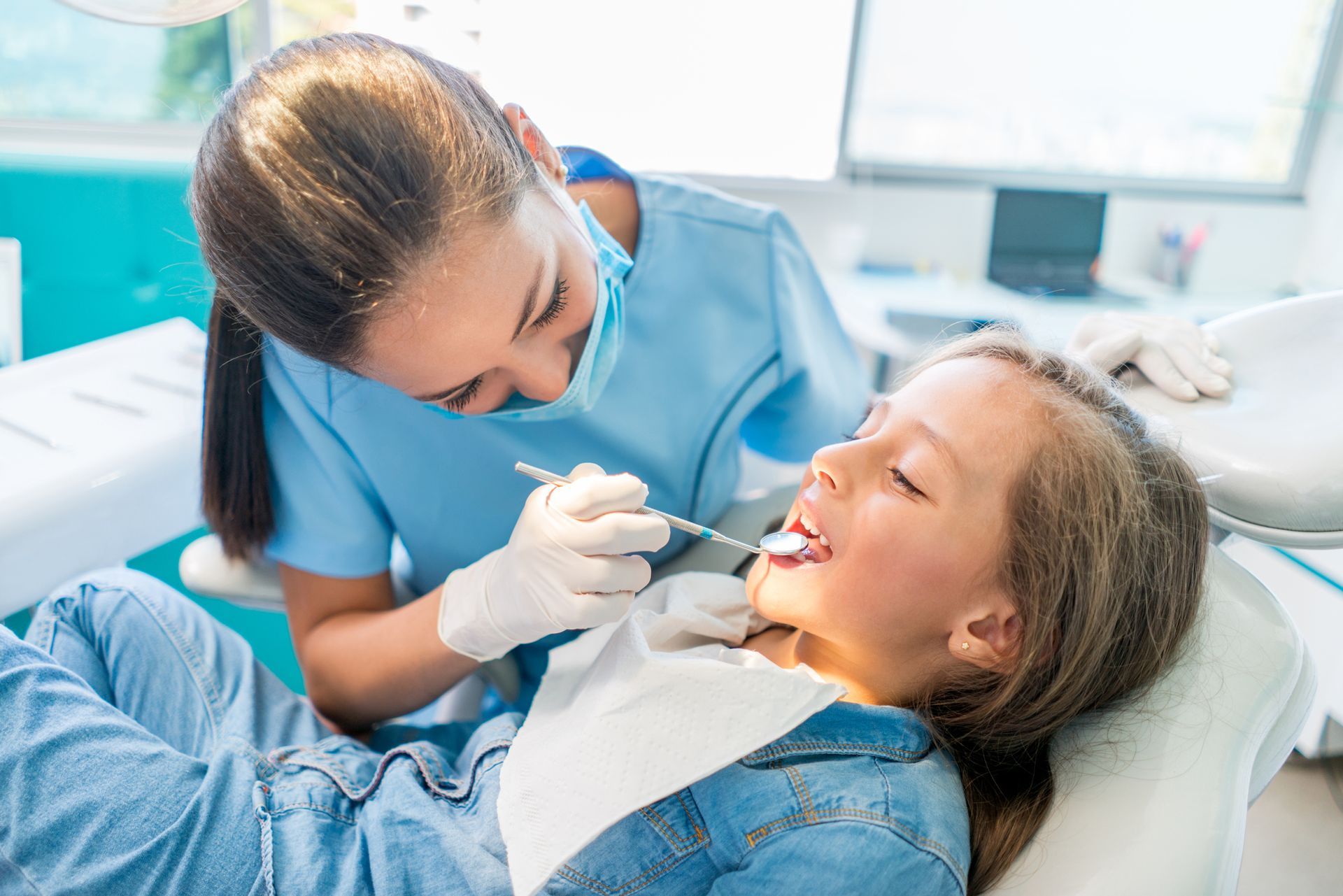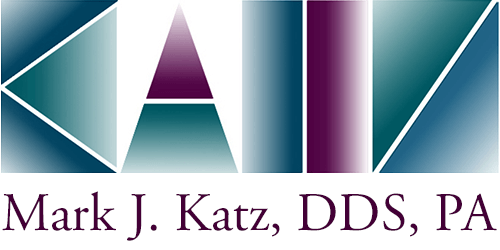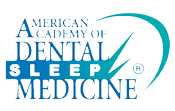We are always excited about meeting new patients during their first visit to our office. Your initial appointment will consist of a thorough examination and a discussion of potential treatment options. This important 60-minute visit will give us insight into your orthodontic needs. We know your time is valuable, so we complete diagnostic records at this visit as well, which are necessary for developing the appropriate treatment plan. These records include x-rays, photos, and an intraoral scan of your teeth.
During the initial examination for each patient, we will address the following questions that cover the basics of orthodontic treatment. We encourage you to ask questions as well.

- Is there a condition that orthodontics can address?
- Is treatment needed now, or should treatment be delayed until appropriate growth, tooth eruption, or other factors have occurred?
- What treatment procedures will be used to correct the problem?
- Do any permanent teeth need to be removed?
- How long will treatment take?
- How much will it cost?
- What are my payment options?
While we can often answer most questions about treatment during the initial examination, some treatments need in-depth planning and additional analysis. This may require additional appointments to provide superior results.
Please assist us by providing the following information at the time of your first visit:
- Any panoramic X-ray taken within the past six months.
- If you have orthodontic insurance, bring your insurance card. By providing this information at the first visit, we will be able to give you an estimate of your costs.
Orthodontic FAQs: Your Top Questions Answered
Is It Required That My Family Dentist Schedule My Appointment With the Orthodontist?
No, it is not. Many of our patients are referred by their family dentist, yet many other patients take the initiative to schedule an examination themselves.
At What Age Should I Schedule an Appointment for an Orthodontic Screening?
The American Association of Orthodontists recommends an orthodontic screening at age 7. By this age, several permanent teeth in most children have erupted, allowing us to effectively evaluate your orthodontic condition.
Will My Teeth Straighten Out As They Grow?
No, they will not. The space available for the front teeth does not increase as you grow. In most people, after the permanent molars erupt, the space available for the front teeth decreases with age.
How Do I Schedule an Appointment for an Initial Exam?
If you or your child can potentially benefit from orthodontic treatment, simply call our office or send us an e-mail. We will be happy to schedule an appointment for you. When you call to schedule your appointment, our front office staff will request some basic information from you.
What Will Happen at the Initial Examination Appointment?
Upon arriving, each patient and parent will be seen by the staff and doctor who will acclimate you to our office and prepare for the initial exam. We will take the necessary photographs and X-rays to allow us to make a proper diagnosis. The doctor will then complete a brief but thorough exam.
What Will I Learn From the Initial Examination?
There are five essential questions that we will cover during the initial examination:
- Is there an orthodontic problem, and if so, what is it?
- What must be done to correct the problem?
- Will any teeth need to be removed?
- How long will the treatment take to complete?
- How much will the treatment cost?
Will I Need to Have Teeth Extracted for Braces?
Removing teeth is sometimes required to achieve the best orthodontic result. Straight teeth and a balanced facial profile are the goals of orthodontics. However, because new technology has provided advanced orthodontic procedures, removing teeth is not always necessary for orthodontic treatment.
How Long Will It Take to Complete the Treatment?
Treatment time obviously depends on each patient’s specific orthodontic problem. In general, treatment times range from 12 to 30 months. The “average” time frame a person is in braces is approximately 22 months.
How Much Will Braces Cost? Are Financing Options Available? How Does My Insurance Work?
It is impossible to give an exact cost for treatment until we have examined you. We will cover the exact cost and financial options during the initial examination. We have many financing options available to accommodate your needs, and we will review these with you. We will also review your insurance policy and help to maximize your benefit and file your claims.
How Often Will I Have Appointments?
Appointments are scheduled according to each patient’s needs. Most patients in braces will be seen every 5-10 weeks. If there are specific situations that require more frequent monitoring, we will schedule appointments accordingly.
Can I Schedule All of My Appointments After School?
Unfortunately, we cannot schedule all appointments for students during after-school hours. However, because most appointments are scheduled 5-10 weeks apart, most patients will miss minimal school due to their orthodontic treatments. We will, however, make a sincere effort to meet your scheduling needs.
Can I Drop My Child Off for an Appointment?
Yes. We understand your busy schedule, and we are happy to help you make the most of your time. On some occasions, we may request to speak with a parent when they return, so we ask that parents check in with their patient manager before dropping off their child.
Do Braces Hurt?
Generally, braces do not “hurt.” After certain visits, teeth may be sore for a few days. In these situations, pain medications such as Advil or Tylenol will ease the discomfort. However, after most visits, patients do not feel any soreness at all! We often remind our patients, “It does not have to hurt to work!”
Can I Return to School the Day I Receive My Braces?
Yes. There is no reason to miss school because of an orthodontic appointment.
Do You Give Shots?
No. Shots are not necessary in orthodontic treatment.
Do You Use Recycled Braces?
Absolutely not! It is our belief that each patient should be provided with their own braces to achieve the best orthodontic result possible.
Can I Still Play Sports?
Yes. We recommend a mouthguard for all sports.
Do I Need to See My Family Dentist While in Braces?
Yes! Regular check-ups with your family dentist are important while in braces. Your family dentist will determine the intervals between cleaning appointments while you are in braces.
Are There Foods I Cannot Eat While I Have Braces?
Yes. Once treatment begins, we will explain the complete instructions and provide a comprehensive list of foods to avoid. Some of those foods include ice, hard candy, raw vegetables, and all sticky foods (i.e. caramel and taffy). You can avoid most emergency appointments to repair broken or damaged braces by carefully following our instructions.
How Often Should I Brush My Teeth While in Braces?
Patients should brush their teeth at least four times each day—after each meal and before going to bed. We will show each patient how to floss their teeth with braces and may also provide a prescription for a special fluoride, if necessary.
What Is an Emergency Appointment? How Are Those Handled?
If your braces are causing extreme pain or if something breaks, you should call our office. In most cases, we can address these issues over the telephone. If you require an emergency appointment, we will set aside time for you.
Can Orthodontic Correction Occur While a Child Has Baby Teeth?
Yes. Some orthodontic problems are significant enough to require early intervention. However, if a patient is not yet ready for treatment, we will follow that patient’s growth and development until the time is right for treatment to begin.
What Is Phase One (Early) Treatment?
Phase One treatment, if necessary, is usually initiated on children between the ages of 7 and 10. Phase One treatment lasts about 12-21 months. The primary objective for Phase One treatment is to address significant problems to prevent them from becoming more severe and to improve self-esteem and self-image.
Will My Child Need Full Braces if He/She Has Phase One Treatment?
It is best to assume that your child will need full braces even after Phase One treatment. The period following Phase One treatment is called the “resting period,” during which growth and tooth eruption are closely monitored. Throughout this period, parents and patients will be kept informed of future treatment recommendations.
Will My Child Need an Expander?
At the completion of the initial examination, we will determine whether a patient will need an expander.
Is It Too Late to Have Braces if I Am Already an Adult?
A surprising percentage of our patients are adults. In fact, 25% of all orthodontic patients are adults. Health, happiness, and self-esteem are vitally important to adults. No patient is “too old” to wear braces!
Can I Wear Braces Even Though I Have Crowns and Missing Teeth?
Yes. A tooth with a crown will move just like a tooth with a simple filling. When teeth are missing, orthodontic treatment will aid in the alignment of the remaining teeth.
Why Should I Choose an Orthodontic Specialist?
Teeth, and sometimes entire facial structures, are permanently changed by orthodontic treatment. It is important that the treatment be appropriate and properly completed. Orthodontic specialists have extensive and specialized training that enables them to provide their patients with professional, personalized treatments.
Orthodontic Glossary: Key Terms Explained
Appliance
Anything that is attached to your teeth that moves your teeth or corrects your bite.
Archwire
A wire is engaged in orthodontic attachments, affixed to the crowns of two or more teeth, and guides the direction of tooth movement.
Band (Orthodontic)
A thin metal ring, usually stainless steel, which serves to secure orthodontic attachments to a tooth. The band is closely adapted to fit the contours of the tooth and then cemented into place.
Bracket
An orthodontic attachment made of metal, ceramic, or plastic that holds the archwire against each tooth. The archwire fits into a slot in the bracket. Brackets may be attached directly to each tooth or to a band.
Ceramic brackets
Crystalline, alumina, tooth-shade, or clear synthetic sapphire brackets that are aesthetically more attractive than conventional metal attachments.
Chain
An elastic chain that is used to hold the archwires onto the brackets.
Coil Spring
The coil spring fits between brackets and over the archwire.
Debanding
The removal of cemented orthodontic bands.
Elastics (rubber bands)
A tiny rubber ring that ties the archwire into the bracket. Found in numerous colors for better appearance.
Fixed Retainer
A permanent retainer that is bonded to the backside of the front teeth to keep the teeth from shifting from their new position.
Habit Appliance
An appliance designed to deter thumb or finger sucking habits.
Headgear
Generic term for extraoral traction (attached around the back side of the head) for growth modification, tooth movement, and anchorage.
Herbst Appliance
Fixed or removable appliances are commonly designed for overbite problems.
Impressions
An imprint or mold of the teeth used to design an orthodontic treatment plan.
Interceptive Treatment
Interceptive treatment, also known as early treatment, is limited orthodontic treatment usually performed between the ages of 6 and 10. This phase of treatment makes future orthodontic treatment faster and less invasive.
Lingual Appliances
Orthodontic appliances are fixed to the interior (tongue) side of teeth.
MARA appliance
A growth appliance that helps correct overbites by positioning the patient’s lower jaw forward.
Maxillary
Of or pertaining to the upper jaw. May be used to describe teeth, dental restorations, orthodontic appliances, or facial structures.
Mouth Guard
A mouthpiece that is tailored to provide protection to the braces and teeth while the patient is playing a sport.
Palatal Expander
Attached to the upper molars through bonding or by cemented bands, the palatal expander is used to create a wider space in the upper jaw.
Radiograph
A permanent image, typically on film, produced by ionizing radiation. Sometimes called an X-ray after the most common source of image-producing radiation.
Retainer
Any orthodontic appliance, fixed or removable, used to maintain the position of the teeth following corrective treatment.
Separator (Spacer)
Small elastics that fit snugly between certain teeth to move them slightly so bands can be placed around them later.
Wax
Patients are instructed to place wax over a bracket or poking wire that is causing irritation to the lip or cheek.
Make your first visit a breeze! Call (336) 286-5800 to schedule your consultation at Katz Orthodontics in Greensboro, NC.














